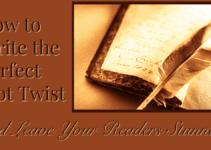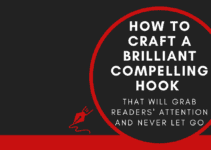The Importance of a Compelling Antagonist in Your Story

The villainous antagonist! The master of mischief, the bringer of conflict, and the thorn in the side of our beloved protagonists. In any good story, a compelling antagonist is like that extra sprinkle of spice that takes a dish from bland to BAM!
Creating a captivating villain is no easy task. It requires finesse, creativity, and maybe just a touch of wickedness. But fear not, dear writer, for without an antagonist to challenge our heroes and stir up trouble, our stories would be as exciting as watching paint dry.
So why is it so important to give your story a dastardly antagonist? Well, my friend, it’s all about that sweet conflict. A strong antagonist provides the perfect foil for your main characters. They serve as the catalyst for growth and development as they push our heroes to their limits.
Think about it – would Harry Potter be half as interesting without Lord Voldemort? Would Batman have his iconic brooding charm without The Joker? I think not! A well-crafted villain adds depth and tension to your narrative, making readers or viewers eagerly turn each page or cling to the edge of their seats.
So go forth and create your own diabolical antagonist! Give them layers of complexity and motivations that will keep readers guessing. Just remember: behind every great hero is an even greater villain trying to steal the spotlight (and maybe even their lunch money).
Finding the Perfect Balance: Crafting an Antagonist that Fits the Genre and Storyline
The delicate art of crafting the perfect antagonist is like finding the right balance between adding a sprinkle of evil and a dash of chaos to your story. You want an antagonist that not only fits the genre but also adds that extra oomph to your storyline.
Think of it as villain matchmaking – you need to find a genre-specific villain who complements your protagonist like peanut butter complements jelly. Whether it’s a cunning mastermind, a misunderstood anti-hero, or an evil sorcerer with impeccable fashion sense, the key is to ensure they align with your story’s tone and theme.
But wait, there’s more! Antagonist development is crucial. You don’t want a cardboard cutout baddie who just twirls their mustache and laughs maniacally. No, no! Give them depth, complexity, and maybe even a tragic backstory that makes readers question their own moral compass.
So remember, when it comes to crafting an antagonist that fits the genre and storyline, embrace your inner mad scientist (minus the creepy lab coat) and let your imagination run wild. The result? A villain so captivating that readers will be torn between rooting for them or hoping for their delicious downfall.
Subplot Shenanigans: Integrating the Antagonist Seamlessly into Your Story
We all know that a good story needs a captivating antagonist to keep things interesting. But how do you weave in the villain seamlessly without overshadowing your protagonist?
It’s all about finding that delicate balance between the hero and the villain. Think of it as a dance, where both characters take turns leading and following. You want to give your antagonist enough screen time to develop their own storyline, but not so much that they steal the show.
One clever trick is to intertwine the secondary plot development with the main narrative. This way, you can explore the depths of your antagonist’s motivations and actions while still keeping your protagonist in focus. It’s like having two storylines running parallel, creating an intricate web of suspense and intrigue.
Remember, a well-integrated villain subplot adds layers of complexity to your story. It keeps readers on their toes, wondering what devious plans the antagonist has up their sleeve. So don’t be afraid to let your villain shine (just not too brightly) as you navigate through this delightful game of storytelling cat-and-mouse!
Making Them Despicable Yet Relatable: The Art of Creating a Villain Readers Love to Hate

Creating a despicable yet relatable villain is like trying to make a bad guy that readers just can’t help but love to hate. It’s a delicate dance of dastardly deeds and complex character development.
First, let’s talk about the key ingredient – despicability. A truly detestable villain needs to have qualities that make your skin crawl. Maybe they kick puppies or steal candy from babies (not cool, by the way). But here’s the twist – they also need traits that readers can understand and even sympathize with.
Yes, you heard me right. We want readers to hate this villain, but deep down inside, we want them to kinda get where they’re coming from. Maybe they had a rough childhood or experienced some heartbreak along the way. It doesn’t excuse their actions, but it adds layers of complexity that make them more than just a one-dimensional baddie.
Creating a complex bad guy means giving them motivations and desires that are relatable on some level. Maybe they’re seeking revenge for past wrongs or fighting for what they believe is right (even if their methods are questionable). Think Darth Vader – he may be evil incarnate, but there’s still something tragic about his fall from grace.
So go ahead and dive into the dark depths of villain creation! Make them despicable yet relatable, hated yet understood. Just remember, it’s all in the balance of wickedness and complexity. And hey, if you succeed in making readers love to hate your villain, then you’ve truly mastered the art of storytelling wickedness!
Avoiding Protagonist Outshining Syndrome: Ensuring the Antagonist Complements the Main Character
Picture this: a protagonist so dazzling, so captivating, that they shine brighter than the sun. But wait! What about the poor antagonist? They’re left in the shadows, feeling like a sidekick who got lost in the plot.
In the world of storytelling, it’s crucial to strike a balance between our beloved protagonist and their not-so-beloved counterpart. We don’t want our antagonist to be just another lackluster villain twirling their mustache in the corner. We want them to complement our main character like peanut butter complements jelly (or like ketchup complements fries for my non-sweet-toothed friends). But, we don’t want our Antagonist to outshine our protagonist either.
The dynamics between the protagonist and antagonist are key. Think of them as a dance duo – one leading and one following, each with their own unique moves. The sidekick dynamics come into play here too – they can add spice to the mix by highlighting different aspects of both characters.
So let’s make sure our protagonists don’t hog all the limelight, leaving our antagonists feeling like wallflowers at a high school dance. It’s time for some antagonist appreciation! It’s all about finding that perfect balance and creating a story that keeps us on our toes (or sitting on the edge of our couches) until the very end.
Crafting an Unforgettable Showdown: How to Give Your Protagonist a Worthy Adversary
The epic showdown between the hero and the villain is like a dance of wits, power, and dramatic flair. In this section, we’ll dive into the art of crafting an unforgettable showdown that will leave your readers on the edge of their seats.
When it comes to creating a worthy adversary for your protagonist, you need to think big. We’re talking about a villain who can match your hero’s strength, intelligence, and charisma. No cardboard cutouts or one-dimensional baddies here! Give your villain some depth and complexity that will make readers question their own allegiance.
Now, let’s talk about that climax scene. This is where all the build-up pays off in a spectacular display of conflict. Think explosions, high-stakes situations, and plenty of witty banter between our hero and villain. Make sure to give your protagonist some clever tricks up their sleeve too – after all, they’ve been preparing for this moment their whole life!
Remember, it’s not just about physical confrontation; it’s also about psychological battles. Throw in some mind games and emotional manipulation to really amp up the tension. Your readers won’t know who to trust or what will happen next!
So go forth and create an epic confrontation between your hero and villain characters! Make it unforgettable, make it thrilling, and most importantly – make it entertaining!
You should also check out these similar post topics:
The Art and Science Behind Captivating Character Creation
Unleashing the Power of Strong Female Protagonists in Romantic Suspense
Alpha Males: Unmasking the Mystery of Why Women Can’t Resist Them
LET’S CONNECT!
There are many ways to connect withAmy Stewart Bell. We would love to know what you think and any of the topics we offer. We welcome your comments and want to interact with you!
If you haven’t yet, grab your copy ofOnce Captured, the first in Amy’s Captive Series. And be on the watch for the second in the series, Uncharted Captivity, to drop!
You can also connect in other areas. Join us on Instagram@AmyWritesAlland on Facebook@AmyWritesAll.
Be sure to join our community newsletter and you will get even more inside info!








No Responses